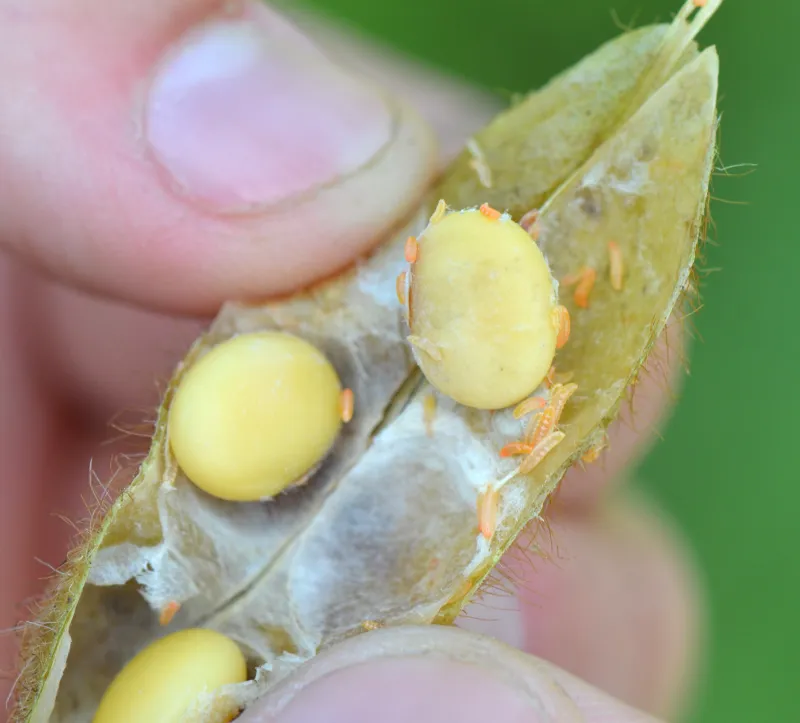Soybean Gall Midge and White-mold Gall Midge in Soybean
(E2006, Dec. 2020)This publication describes two species of gall midges that infest soybeans. Soybean gall midge is an invasive and economic insect pest of soybeans that occurs in five Midwestern states (Iowa, Minnesota, Missouri, Nebraska and South Dakota). It does not occur in North Dakota yet. The white-mold gall midge is native to North America and is not economic insect pest of soybeans. Larvae of the white-mold gall midge can be found feeding on Sclerotinia white mold disease in stems and pods. This publication describes how to scout and identify the two species based on their location on plants, field symptoms and plant injury symptoms. It also tells pest managers what to do if you find any suspect soybean gall midge in your soybean fields in North Dakota.










